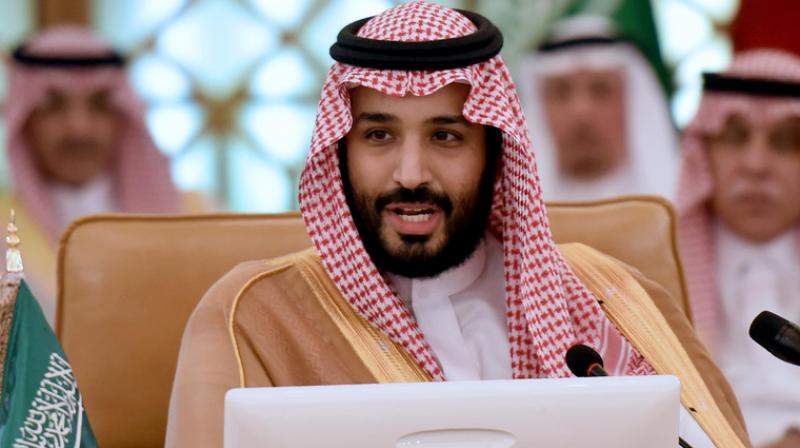Oilfield attacks have damaged House of Saud

The Iranians or their Houthi proxies could not have factored for the quick recovery of markets after their September 14 strikes on Saudi Arabia’s oil facilities. Likely prepared for retaliation from Anglo-American powers egged on by Saudi Arabia, there was a second surprise — none came. While Saudi Arabia cannot express its deep-seated fears, it would be facing its moment of truth. The 74-year alliance with the United States cannot be counted on in Riyadh’s moment of grave peril. Iran has dealt a blow to Saudi Arabia’s none-too-peaceful rise since 2015 under the Crown Prince, Mohammed bin Salman.
Without the option, Saudi Arabia has to abandon foreign adventures in neighbouring Yemen, where the September attack likely originated, Syria, and elsewhere. It has to accept the word of former US President Barack Obama that Riyadh shares the neighbourhood with Tehran and make peace with it however repugnant the prospect to the present White House. Furthermore, states like India have to accept Saudi Arabia’s limited role in Muslim affairs. A Kashmir solution does not lie in the absolutist hands of Mohammed bin Salman who the CIA says ordered the murder of the dissident journalist Jamal Khashoggi.
The Middle East is no longer the mildly decipherable place of the late-sixties and early-seventies when Saudi Arabia and Iran formed the “twin pillars” of US policy for the region. Chiefly, the US is not in the region for oil, having enough and more shale which rescued the markets from the September 14 catastrophe of halved Saudi production. Nothing like the 1973 oil shock should be experienced again when Saudi oil sales to Western powers were embargoed for supporting Israel in the Yom Kippur War.
When the US lost Iran to the Khomeini revolution, the region never recovered from the change. Wracked by Wahhabi fundamentalism, Saudi Arabia proved an inadequate residual ally. Narrowly saving itself from the Grand Mosque siege of 1979, it exported its Islamist youth in consequence to the Afghan mujahideen war. When the Iran-Iraq war exposed the dreaded face of Shia political Islam and the irredentism of Saddam Hussein, it took cover vainly in the Gulf Cooperation Council (GCC) of Arab monarchies. The two Gulf Wars led by the United States finished Saddam but unintendedly spurred the rise of Saudi Arabia’s greater adversary, Iran.
From then on, it has been downhill for Saudi Arabia till the Crown Prince, bin Salman, propped it up with steroids in 2015 with disastrous consequences. Iran’s rise on Saddam’s fall was paralleled by the ascent of Recip Tayyip Erdogan of Turkey who smelled opportunities in the Arab regions of the former Ottoman Empire. Abandoning military-led secularism and reorienting Turkey away from Liberal Democratic Europe, he wooed the richest and most conservative Arab state, Saudi Arabia, on the basis of their common antipathy for Iran, for business investments and tourists, and gave short shrift to the pro-Israel policies of his predecessors.
When the Arab Spring came in 2011, Mr Erdogan as quickly seized the opportunities it provided for his brand of political Islam as did Iran for its. Their common sights were set on Egypt, which came under the sway of the Muslim Brotherhood. Terrified of the Brotherhood’s impact on its absolute monarchy, Saudi Arabia opened its purse to see it ousted, became wary of Turkey, and took to greater loathing of Iran.
Iran was not immune to the Arab Spring. When Saudi Arabia proposed peace with Israel during the second intifada, Hamas of Gaza, derived from the Brotherhood, became close to Iran. That alliance broke when Hamas joined the opposition during the Arab Spring stirrings against the Syrian regime backed by Iran. Relations are back on track because Hamas needs the money and Iran needs Hamas’ goodwill to win the Arab street.
If these shifting currents tell something, they speak of the flexible approaches of all parties except the Saudis. Blindsided by the Arab Spring, the US couldn’t make it easier for Riyadh. In Riyadh’s own backyard, there was trouble when Qatar, a GCC member, broke ranks in support of the Muslim Brotherhood, and did the further unspeakable act of making peace with Iran. Recklessly leading a regional blockade of Qatar in 2017, the Crown Prince opened the space for Turkey, which came with food and garrisoned a detachment of troops in the tiny peninsular state as a matter of abundant caution. It is madness in the circumstances to consider that the Crown Prince or his aides chose the Saudi consulate in Istanbul to liquidate Jamal Khashoggi and provided Ankara with a handle on Riyadh.
For all that, the Crown Prince is not mad. He is a man in a hurry but cannot brook opposition. He can’t be faulted for rousing Saudi Arabia when Iran started stealing the show all too often. But his judgment to intervene in Yemen’s civil war against Iran’s Houthi proxies was disastrous for the human casualties it has produced (over 7,000 civilians killed and several millions facing starvation) and for endangering key Saudi assets as the September 14 destruction shows. The US is no less to blame for providing arms, intelligence and logistics support for the war of which only aerial refueling has stopped.
Not done with the war, Crown Prince Mohammed bin Salman has opened other fronts, but inside the kingdom. For a life after oil, he has proposed Vision 2030 based on foreign investment, peak local employment, removal of subsidies, etc. This needs settled internal conditions at the least but that’s far from the case. Nationalism in the name of the Crown Prince is raging. Anyone who dares question Yemen or Qatar or raises local controversies is branded anti-national on the social media. While women-related reforms are welcome, such dissent as Saudi Arabia is capable in the best of times has been driven underground.
In the year of Qatar, billionaires from the Saudi royal family and businessmen commoners were locked up for three months in a Riyadh luxury hotel and $100 billion extracted from them apparently constituting corrupt earnings. Royal privileges are notoriously widespread and by one account revenue from one million barrels of oil was skimmed off as payments to the House of Saud. When a previous king wanted to rationalise the privileges, the present monarch, King Salman, the Crown Prince’s father, protested. His protest became a US diplomatic cable which found its way out in Wikileaks. The son is no better. In recent years, the Crown Prince has splurged altogether $1.3 billion on a yacht, a French chateau and a Leonardo da Vinci painting. He refuses to answer questions about his wealth but plays Savonarola.
With Donald Trump’s backing, he could have gone on for longer, but the September 14 strike has damaged him and Saudi Arabia even more. He has asked the leaders of Pakistan and Iraq to speak with Iran, whose terms would be tough, starting with the removal of US sanctions, which have produced rather unintended gains for Tehran like Saddam’s removal by an earlier American action. Iran has correctly diagnosed that Mr Trump is in no mood to provoke a Middle Eastern war when the Syrian and Afghan ones show no signs of ending and his re-election is due with the sword of impeachment hanging over his head.
With the Crown Prince seeking Pakistan’s intermediation with Iran, it makes little sense for India to expect him to pull its Kashmir chestnuts out of the fire. It is quite possible that Saudi Arabia may face an internal churn now, nullifying its capacities to intervene abroad. The House of Saud has withstood all efforts to dislodge it so far. It remains to be seen if the future is as kindly.

